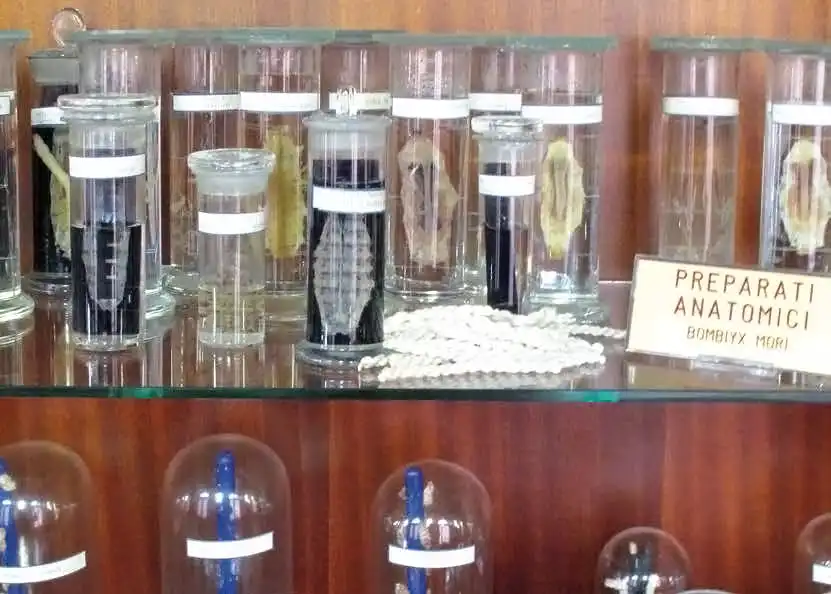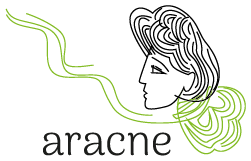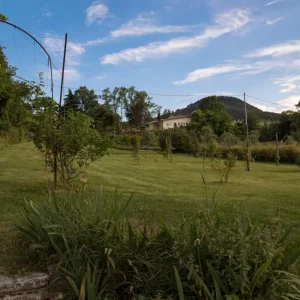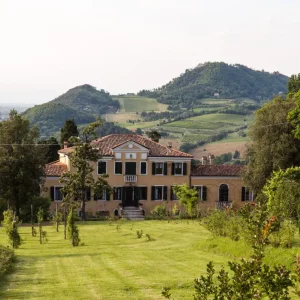The Sericulture station
In 1924 the station was moved to the new suburb of Brusegana, where it has remained to this day, despite the expansion of the city around it. In 1961 the Sericulture station was named after its founder Verson, to celebrate his contribution, especially in initiating sericulture courses that trained more than 1,200 students. In moving from Gorizia to Padua, the Verson family purchased a villa in a state of semi-abandonment, which was emptied of its furnishings and decorations by the heirs of the last owner, Abbot Giuseppe Barbieri (1774-1852), who so much luster had given it during the years of his residence in Torreglia through his literary activity. It is precisely as part of the activities of historical research and recovery of the local cultural heritage
related to the sericulture, that it was possible to trace back to the heirs of Enrico Verson, who still reside in
the villa of the same name.

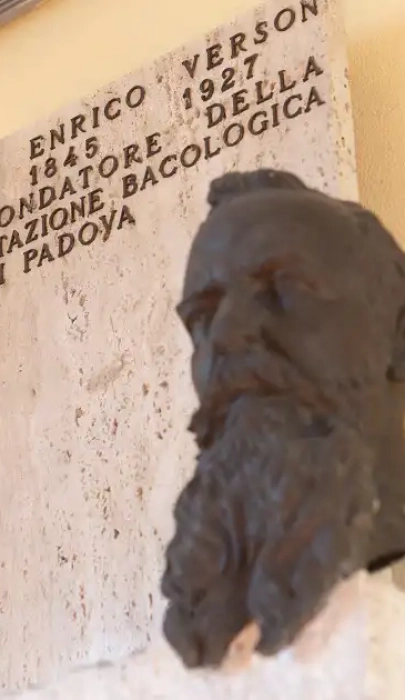
The villa in Torreglia
The family continued the work of restoration and preservation of the building and the adjoining land, begun by the patriarch, preserving intact the structure interior and the exterior appearance. A former meeting recently took place between the heirs of the family and the current head of the Sericulture Laboratory of Padua at the villa in Torreglia and the latter one at the Brusegana site. They had valuable opportunities to compare cultural and personal memories. In the villa there is, in fact, a library of the prof. Verson and private correspondence has been preserved, entertained in particular with his son, Saverio Verson, who studied Medicine at the University of Pavia.
The idea is to build an itinerary of the Verson's places; in fact, the former Royal Experiment Sericulture Station can be visited in its section of the Esapolis Museum where the archives containing Verson's writings, the historical library, the silk collections and scientific instruments are gathered. From the writings emerge all the genius, passion and faith in research of a man with a strong-willed, steadfast and outspoken character. The absolute dedication to his work, the constant commitment to the dissemination
of knowledge and scientific findings, the international relations with scholars from all over the world emerge from the manuscripts investigated as part of the historical research being conducted as benchmark of the Aracne project.
The tours of villa upon request
The Verson family allows tours of the exterior of the Torreglia villa upon request: a large park encloses several centuries-old trees and several vineyards, which extend over most of the slope north of the Mira hill. The walk through this place dominated by the quiet and hilly landscape leads to an Italian garden characterised by two small boxwood mazes and a fine collection of English roses. Dominating the landscape is the ancient mulberry tree probably planted by Prof. Verson. Cultural events are often organised in the villa open to the public. The palace in Prato della Valle, Verson's home, could be visited on special chances, and, at least in the garden part it retains an ancient charm. On the occasion of a visit to the Sericulture Lab, Mrs. Maria Elisabetta Verson granted an interview, excerpts of which are presented in the following video.
